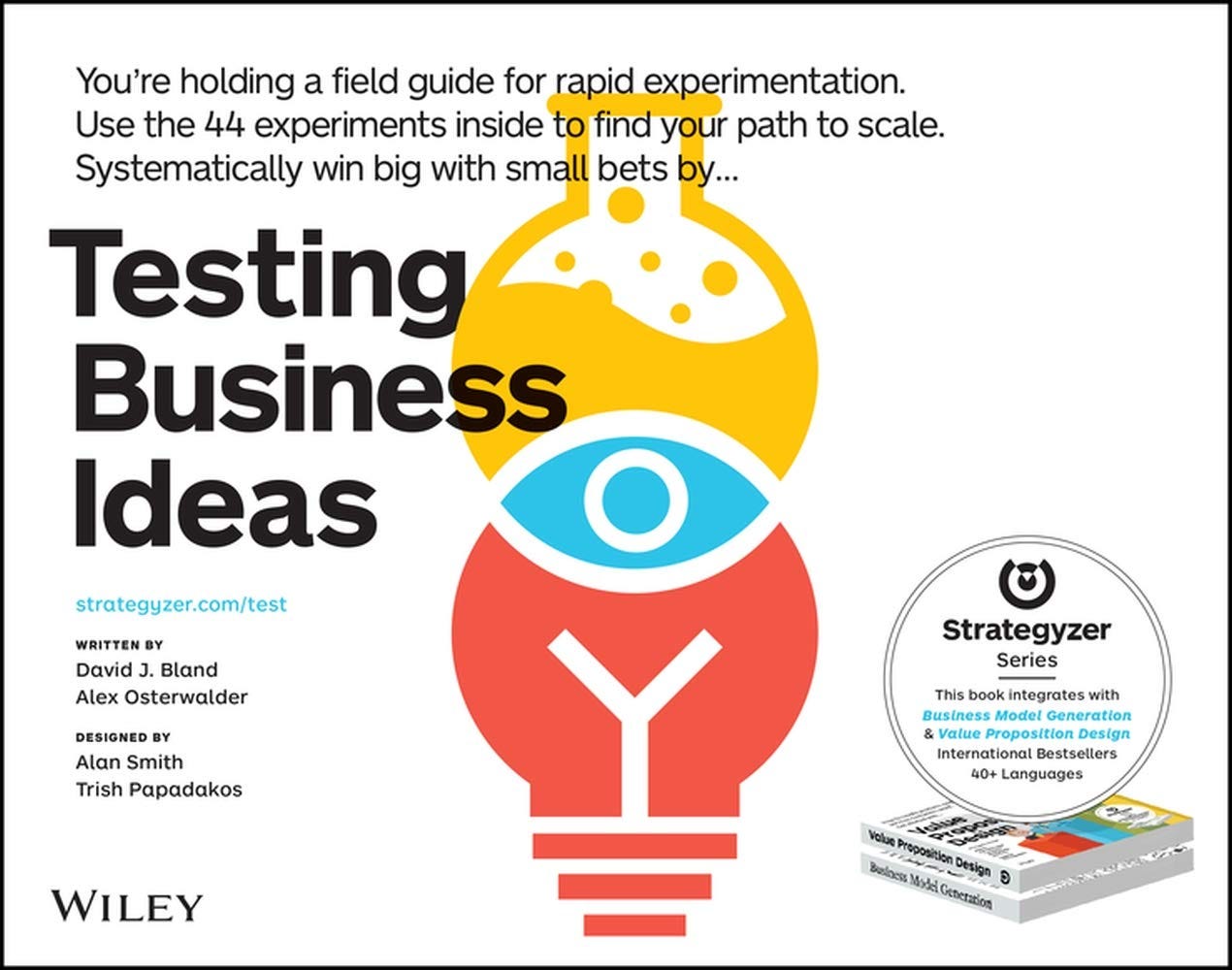The Ultimate Guide To Validate Your Business Idea
This Friday -> "Testing Business Ideas: A Field Guide for Rapid Experimentation" by David J. Bland and Alexander Osterwalder [4 min reading]
On Startup Salad I break down a business book’s key takeaways in a simple, digestible format, just like a good salad!
Hey, it’s Fede!
New year, new beginnings! For many, this means kicking off with their own entrepreneurial project.
But how do you get started? Today, we're answering a key question: How do you come up with a winning business idea?
Let’s dive into the book Testing Business Ideas: A Field Guide for Rapid Experimentation by David J. Bland and Alexander Osterwalder.
This book offers a great guide filled with essential takeaways to help you discover and validate a successful business idea. Highly suggested for all new founders.
Let’s break it down!
Find great business ideas
There are three ways to do it:
Discover something interesting during your studies or within the industry you work in.
Politics often sets long-term goals and then creates laws to achieve them. Pay close attention to these goals. If you launch a product right when a law makes it essential, you've hit the jackpot.
Use AI to generate business ideas. Here’s an example of a prompt you can try:
Suggest 20 scalable startup business ideas based on the following details: area of expertise ([insert your area of expertise]), industry focus ([insert the industry you're focusing on]), and target market ([insert your target market]). Ensure the ideas are scalable and have high potential for growth.
With any of these options, you'll surely find one or, even better, many interesting business ideas. Now it’s time to move on to the next steps!
Create the hypotheses
Now it’s time to take one idea at a time and create hypotheses for the following macro topics:
Feasibility:
Is the business model solid?
What are the resources needed?
Which partnerships do you need?
Desirability:
Do we believe we’re addressing a market demand?
Viability:
Are people willing to pay?
Are the costs reasonable?
Is it profitable?
Tip: To ensure you’ve created all the necessary hypotheses, I suggest you to use these two frameworks:
Once you've filled out these two frameworks, you’ll have a clear overview of your idea, let’s move on to step 3.
Organize the Hypotheses
Right now, the number of hypotheses we have is quite high, and in theory, we should test all of them. Luckily, we have a trick to speed up the process.
Take the hypotheses you've created and place them into a third framework called the Assumption Map.
Start the testing phase with the “high priority” hypotheses in the top right of the map.
Why? Because these are the most critical to the project’s success, yet you have the least information to know if they’re true or not. If you quickly discover they’re not valid and stop the idea, you’ll save money, time, and energy.
Test the hypotheses
As mentioned, it’s time to test your hypotheses.
IMPORTANT: Your goal isn’t to validate your hypotheses but to disprove them as quickly as possible.
Moreover, remember that the testing phase should be repeated as the project evolves.
Always start with simple, quick testing methods, like an online customer survey, that require minimal time and resources.
If the hypotheses are validated and the project advances, move on to more complex tests, such as a product mockup, and eventually a "zero product" test.
It’s key to use a testing system that’s repeatable and comparable, so the process remains efficient. Tools like Experiment Cards and Learning Cards are often used to document what you’ve learned from each test in a consistent way.
Make the decision
Once you’ve finished testing a hypothesis, it’s time to evaluate the results. The potential outcomes are:
Persevere: The hypothesis is validated, meaning you were right, and you can move on to test the next hypothesis.
Pivot: The hypothesis has issues. For some reason, what you thought doesn’t match what’s out there, so you’ll need to rewrite it and adjust it based on the feedback you received. This may require another round of testing.
Kill: Your hypothesis was completely wrong, and it destroys your business idea at its core. Stop, take a breath, and eliminate that idea to start fresh with a new one.
If you’ve managed to make your hypothesis "persevere," remember that you still need to validate all the other hypotheses you created. If all of them pass, well, you truly have an idea worth pursuing.
Good luck!
Stay tuned because the next newsletters will provide you with tons of useful information for the development of your startup.
See you next Friday,
Federico Lorenzon









